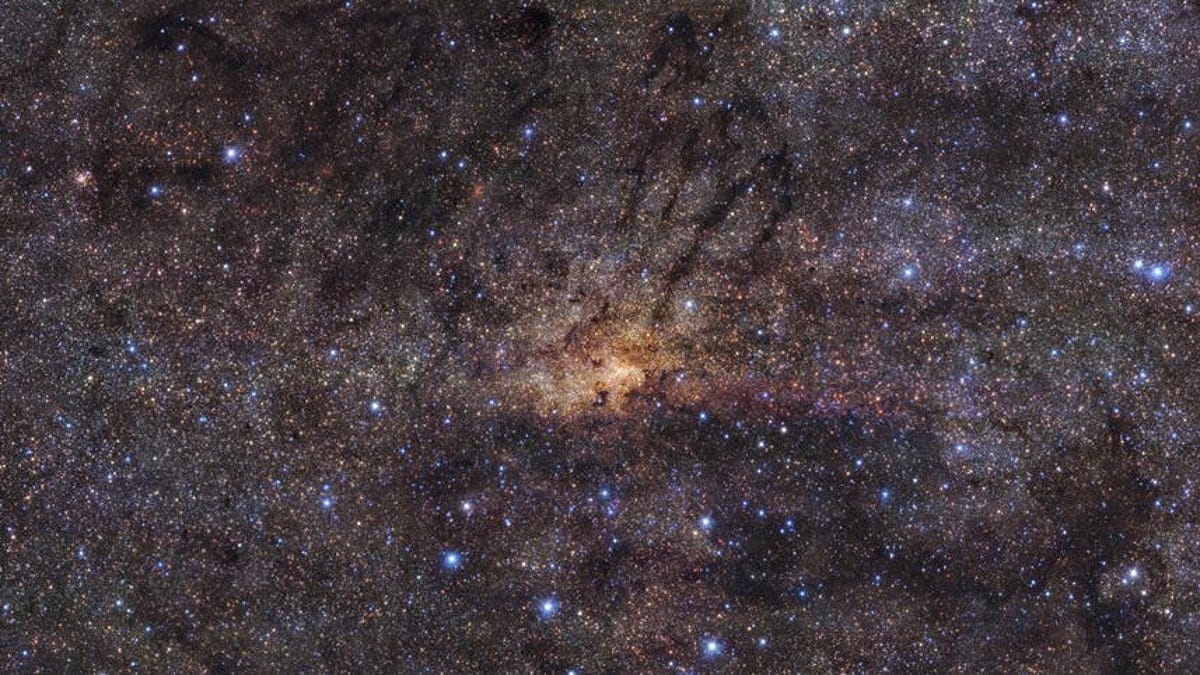Stunning Milky Way image reveals massive, violent eruption 1 billion years ago
A survey of 700,000 stars at the Milky Way's center suggests an outburst of star-forming activity 1 billion years ago.

The Very Large Telescope and a specialized near-infrared imager captured this breathtaking image of the Milky Way's central region.
A breakthrough survey of over 700,000 stars near the Milky Way's galactic center has produced one of the most stunning images of our home galaxy. Astronomers studying the massive population of stars in the "nuclear disk" at the center of the galaxy hypothesize there were two major periods of star formation in the region, contradicting earlier beliefs it was in a near-constant state of star formation.
The study, published Monday in the journal Nature Astronomy, gathered the new images using the High Acuity Wide-field K-band Imager (HAWK-I) on the Very Large Telescope (VLT) in Chile, which is able to image the cosmos in near-infrared bands. That allows the astronomers to peer through much of the dense gas and debris that clouds our vision of the Milky Way's center -- and the result is the incredible image above.
However, analyzing the populations of stars produced a stunning result, one that researchers believe overturns the currently accepted idea the galactic center has been constantly forming stars over its 13.5-billion-year life. Using theoretical models and the HAWK-I snaps, the team was able to tell a new story about the galactic center's star-forming history.
The new research shows the Milky Way's early life was particularly fruitful for the nuclear disk. During the galaxy's first 5 billion years, over 80% of the galaxy's stars were born, but then it dipped into a "quiescent" state, where star formation dropped away. But a huge increase in activity occurred just 1 billion years ago, when approximately 5% of the center's stellar mass suddenly burst to life.
"This burst of activity, which must have resulted in the explosion of more than a hundred-thousand supernovae, was probably one of the most energetic events in the whole history of the Milky Way," said Francisco Nogueras-Lara, a researcher at the Max Planck Institute for Astronomy and first author on the paper, in a press release.
The new evidence also suggests Sagittarius A*, the supermassive black hole at the center of the Milky Way, may have acquired much of its mass during the early formation of the Milky Way.
How the Milky Way evolved to its current state is a contentious question and the new theory will require further scrutinizing before our galaxy's history books are sent to the printing press.
"Whether populations of stars are built up continuously over billions of years or in a series of shorter bursts has been a long running argument in astronomy," says Michael Brown, an observational astronomer at Monash University in Melbourne, Australia, who was not associated with the study.
Brown is cautious in believing the new theory, suggesting the paper relies on a complex method to establish the massive burst of activity a billion years ago. "I find the evidence presented tentative rather than absolutely compelling," he notes.
Originally published 8 a.m. PT

